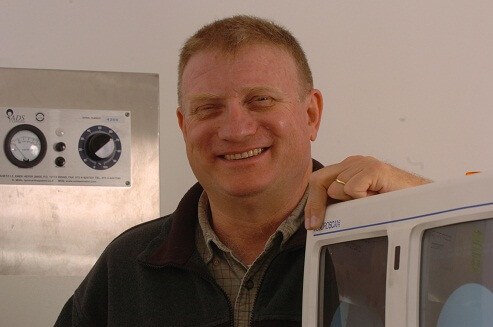A reconstruction of the bone cell experiment conducted by scientists from the Hebrew University will be launched into space today on NASA's Endeavor shuttle

As I remember recently We published about Israeli experiments led by Dr. Eran Shanker from the Fisher Institute who board the space shuttle Endeavor, it turns out that there is another Israeli experiment that is also trying to recreate an experiment that was lost on the Kolomyia ferry
The space shuttle Endeavor that will be launched by NASA today, May 16, 2011, four minutes before four o'clock Israel time, into space will mark not only the end of the shuttle era at NASA, but also the closing of the circle for Prof. Dan Gazit from the Biotechnology Laboratory of The skeleton at the Hebrew University. On the shuttle that will leave, an experiment with bone cells conducted in 2003 on the shuttle of the late Israeli astronaut Ilan Ramon, an experiment that was lost when the shuttle crashed, will be recreated.
In that legendary flight of Ilan Ramon, who was also a close friend of Prof. Gazit, the shuttle carried a special container that contained adult stem cells. The experiment was part of a study conducted by Prof. Gazit and his team from the Laboratory of Skeletal Biotechnology at the Hebrew University, which focuses on the restoration of skeletal tissues using mature stem cells using methods of genetic engineering. The purpose of the experiment was to investigate the effect of subgravity in space on the operation of the stem cells.
"Since it is known that astronauts rapidly lose significant bone mass while in space and actually develop osteoporosis, the goal of the project was to find the genes that are active or silenced in the bone-forming cells and that are responsible for the phenomenon," says Prof. Gazit. The experiment included a comprehensive analysis of thousands of genes in the cells sent to the flight and comparing them to similar cells grown on the ground. The results of the experiment may have implications not only for the health of the astronauts, but also for other populations such as osteoporosis patients and patients confined to bed for a long time.
To continue to reproduce the experiment on Earth after the shuttle crash, the scientists from Prof. Gazit's laboratory used a dynamic culture system that simulates the sub-gravity conditions that exist in space. This system rotates around a central axis and keeps the cells living inside it in a state of free fall.
The results of the research reproduced on Earth were published in 2010 in the journal Tissue Engineering, according to which subgravity conditions cause the stem cells to turn into fat cells and avoid the production of bone-building cells. The results explain why immobility or gravity leads to bone loss.
Prof. Gazit's group is currently working on the development of innovative treatments based on mature stem cells, for the rehabilitation of the spine of osteoporosis patients. In this way, the body's own healing cells are used to fight bone loss and prevent the formation of the multiple fractures that these patients suffer from.
In the flight that will depart today, the original experiment of the scientists from the Hebrew University was recreated by the Fisher Institute which will try to continue to shed light on the mechanism of bone loss in space.
